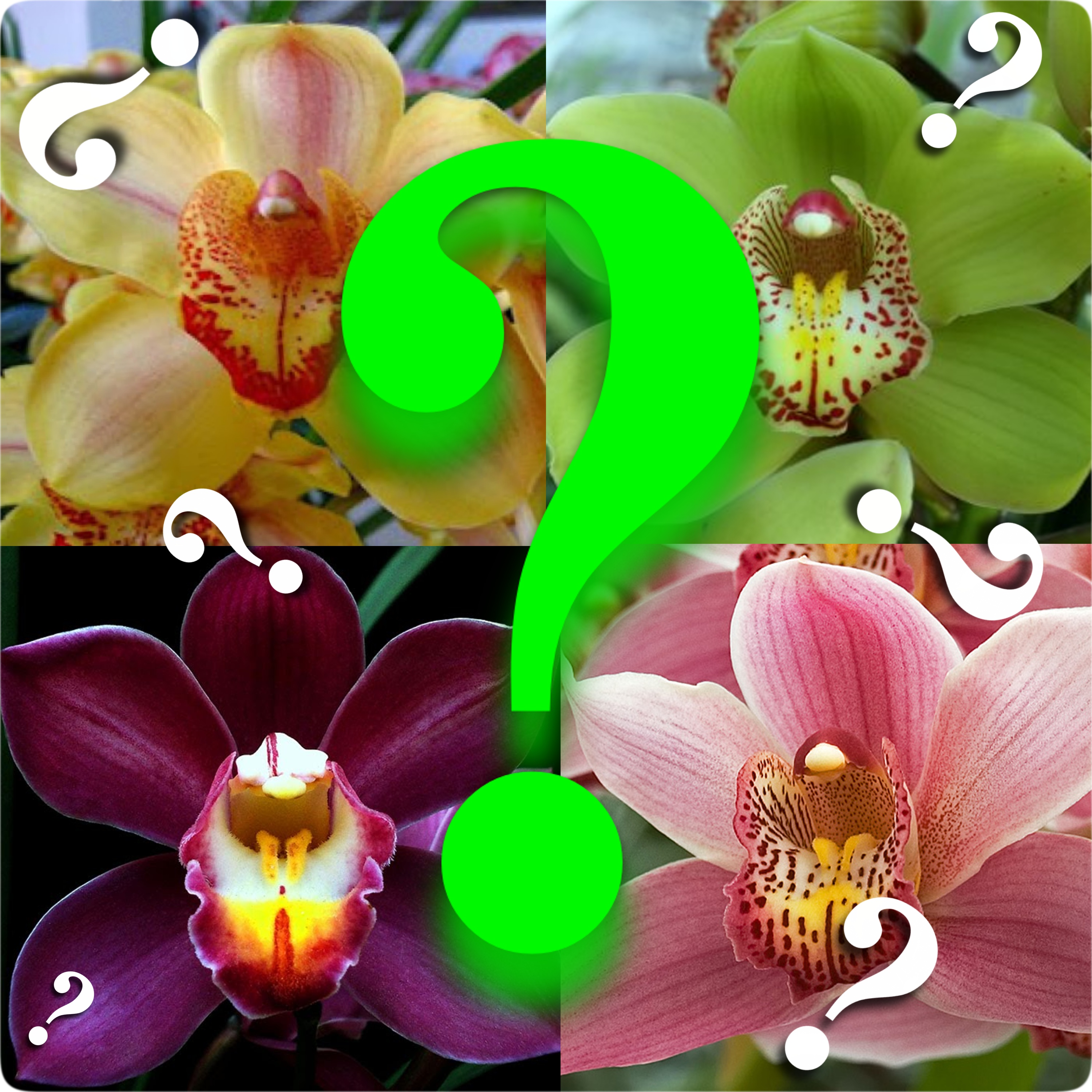Everyone who has worked in a retail setting has funny, frustrating, infuriating, and mind-bending stories of customer interactions. I’m guessing that fast food is the worst, followed by 7-11, and then liquor stores. Online orchid retail may not be in the top five, or even the top ten, but we’ve got plenty to contribute to the annals of retail hilarity and asininity. Here’s one memorable exchange with a customer who started off with a supercilious attitude, and despite my clear explanations, still could not understand what was being explained.
THE SCENE: A Customer saw one of our “mystery” Cymbidium listings (i.e., a “potluck”/random/no_ID_tag Cym plant). The listing has as its front image a montage of various Cymbidium flowers overlaid with questions marks.

CUSTOMER: What is the green cymbidium orchid in the picture?
ME: Hi, Thanks for your interest. The photos are simply random photos of various types of Cymbidiums, not necessarily from the group of plants we have, that comprise “mystery” or plants with no id tags.
If you’re looking for a green Cymbidium from us, you might consider “Zabala” or “Enzan Olive” both of which are available.
CUSTOMER: No I simply trying to get the name of that green orchids . The ones u have are slightly different. It’s strange people selling things and don’t know what they are more than an orchid
ME: The photos are simply random photos of various types of Cymbidiums, not necessarily from the group of plants we have that we’ve designated as “mystery” or no-identification plants.
CUSTOMER: But u have no knowledge period of scientific names it would be good for you to learn
[OK, at this point, the Customer has stepped from ignorant to borderline insulting. Telling me that I have “no knowledge period” of scientific names, well, them’s fightin’ words.]
ME: Well, I do have a Ph.D. in genetics, so I think I know a few things. Plus, I’ve got about 50,000 orchids of different species, and have given orchid talks all over. So this is actually the first time that someone has said that I don’t know what I’m talking about when it comes to orchids…
So thanks for the advice to learn more about scientific names. You should read my orchid book sometime — I’ll be happy to send you a free copy.
CUSTOMER: You don’t understand what I’m saying then all I’m asking is hey you sell orchids so you should know the name of the green one from a pic your provided I’m not trying to buy it from you. Just would like the name of it. I wasn’t even trying to be rude [yes, a likely story] obviously you are I just needed extra help to have a traumatic brain injury!
ME: You said that I ought to learn about scientific names [see above]. Well, this is a weird question to ask about a random orchid photo, but I now understand the issue. You appear not to know the difference between an orchid species and an orchid hybrid. Species plants are what you find naturally occurring in the jungle. Hybrids are usually man-made by breeding related species and producing something that doesn’t exist already in nature.
The vast majority of orchids available for sale are HYBRIDS. Hybrids do not have pure SCIENTIFIC names, which for some reason you thought I should learn more about. All orchids have a genus, in this case, the genus “Cymbidium”. So the green one is actually called Cymbidium Eaglewood Kana. This is NOT a scientific name, BECAUSE IT IS A MAN-MADE HYBRID.
Species plants from nature are given SCIENTIFIC names, and by convention over the past 500 years, the names are in Latin. There are about 100 known Cymbidium species out in the jungles of the world. Each of them has been given a SCIENTIFIC name in Latin. For example, Cymbidium aloifolium, Cymbidium floribundum, Cymbidium traceyanum, etc. There are strict rules governing the naming of naturally occurring species.
The Cymbidium flowers shown in my advertisement photo are all hybrids, and don’t have scientific names. They illustrate the idea that a buyer would be getting a random no ID plant which I make clear in the description.
Now, you WERE being rude when you said the following:
“But u have no knowledge period of scientific names it would be good for you to learn”
You don’t know me at all, but still accused me of having no scientific knowledge and that I ought to learn.
But, your problem is that you assumed that all of the orchids in the photo have SCIENTIFIC names. They do not because they are HYBRIDS.
It appears you don’t know much about orchids, so let me return your advice to me: “it would be good for you to learn.” I hope this has been a helpful orchid lesson for you!
CUSTOMER: Well I am sorry I approached it in that way and while I’m still confused I will drop the matter. What you see is me being confused not nessecarily mean or but sorry just the same
Well, she may still be confused, but at least she apologized at the end.
Still…Is it too much to ask for a bit more civility, and restraint of one’s ignorance, on the internet? Who am I kidding? Of course it’s too much to ask!